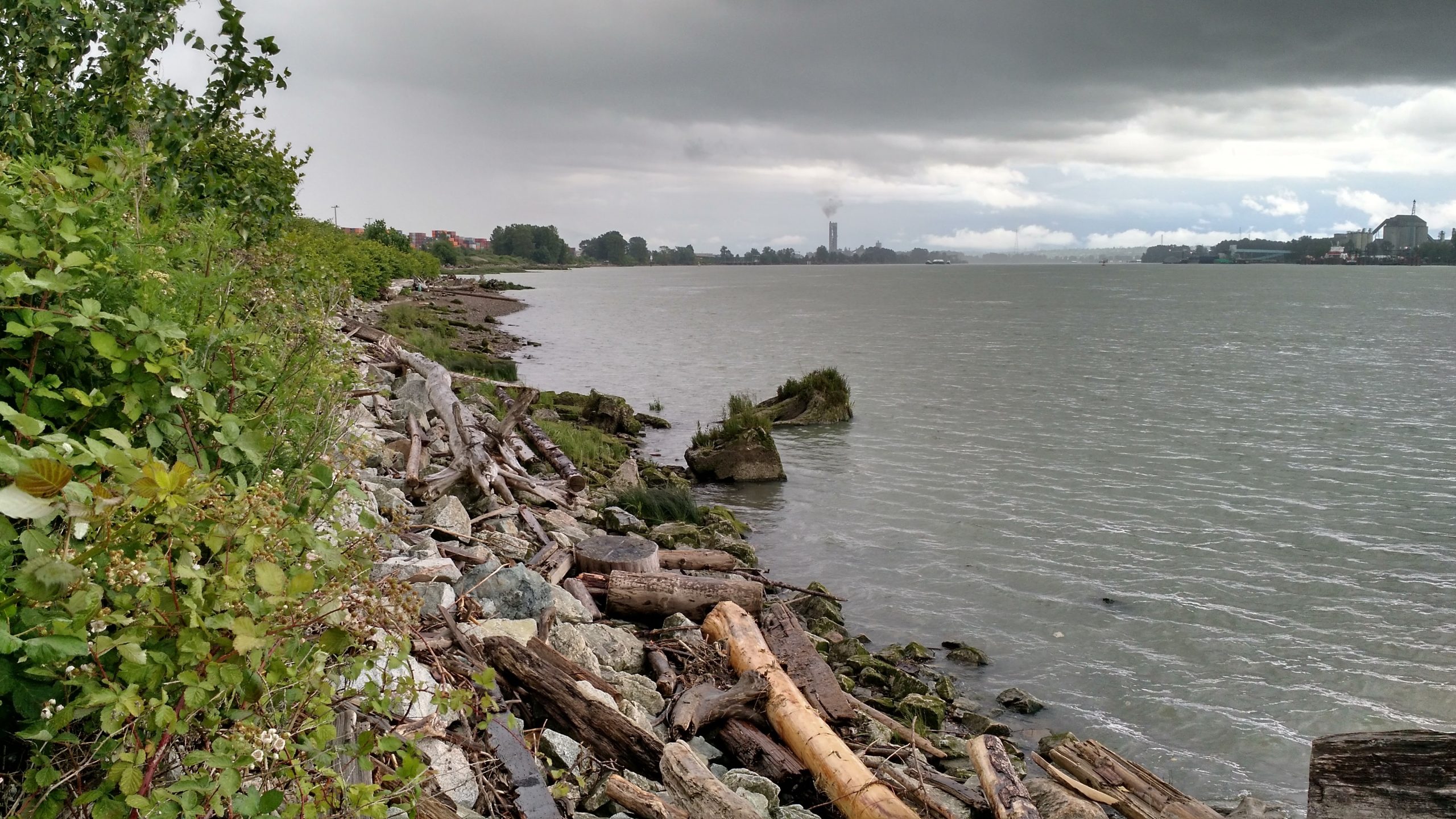What the Quw’utsun Nation court case reveals about private land ownership and Indigenous title in B.C. – The Discourse.

Report on the Judicial Recognition of Quw’utsun Nation’s Aboriginal Title and its Alignment with Sustainable Development Goals
1.0 Introduction: Landmark Ruling on Indigenous Land Rights
A recent Supreme Court of British Columbia ruling has affirmed the Aboriginal title of the Quw’utsun (Cowichan) Nation over 7.5 square kilometres of land at Tl’uqtinus, a former seasonal fishing village in the present-day City of Richmond. This decision represents a significant milestone in the legal recognition of Indigenous rights in Canada and has profound implications for the advancement of several United Nations Sustainable Development Goals (SDGs), particularly those concerning justice, equality, and sustainable communities.
The ruling has ignited a national debate on the coexistence of Aboriginal title and private property rights, highlighting the complex path toward reconciliation and the establishment of equitable governance structures.
2.0 Case Summary and Judicial Findings
The court case, which concluded after 513 days of hearings, centered on the Quw’utsun Nation’s historical and continuous connection to the Tl’uqtinus village site. The Nation presented extensive evidence, including oral histories from Elders, expert testimony, and historical documents, to substantiate its claim.
2.1 Key Determinations of the Court
- Justice Barbara Young ruled that the five First Nations comprising the Quw’utsun hold Aboriginal title to the Tl’uqtinus site.
- The ruling affirmed the Nation’s right to fish for food in the adjacent waters of the Fraser River, a practice central to their cultural heritage and sustenance.
- The court acknowledged that Tl’uqtinus was an established “Indian settlement” at the time of British sovereignty assertion in 1846 and was improperly alienated and sold to colonial officials, including Richard Moody, the official tasked with creating Indigenous reserves.
2.2 Legal Strategy: “Spot Title” Claim
The Quw’utsun Nation employed a “spot title” legal strategy, focusing its claim on the specific footprint of the village and its immediate surroundings. This precise approach contrasts with broader “territorial title” claims seen in previous landmark cases, such as Tsilhqot’in v. British Columbia. This focused litigation allowed for a detailed presentation of historical, oral, and archaeological evidence for a single, specific area.
3.0 Analysis of Alignment with Sustainable Development Goals (SDGs)
The Tl’uqtinus ruling and its surrounding context directly engage with multiple SDGs, providing a framework for understanding its broader importance for sustainable and equitable development.
3.1 SDG 10: Reduced Inequalities & SDG 16: Peace, Justice and Strong Institutions
The court’s decision is a direct mechanism for addressing historical injustices and reducing the deep-seated inequalities faced by Indigenous peoples resulting from colonization.
- Upholding the Rule of Law: The ruling demonstrates the role of judicial institutions in upholding Indigenous rights as protected under Canadian and international law, contributing to the development of strong, accountable institutions (SDG 16).
- Addressing Systemic Disenfranchisement: By recognizing the Quw’utsun Nation’s title, the court addresses the historical failure of the Crown to protect Indigenous settlements, a process that led to the dispossession and marginalization of the Hul’q’umi’num peoples. This is a critical step toward reducing inequalities (SDG 10).
- Fostering Reconciliation: While the decision has been met with political controversy and appeals, it forces a necessary dialogue on reconciliation. The First Nations Leadership Council framed the coexistence of Aboriginal title and private ownership as the foundation for stability and prosperity, essential for peaceful and inclusive societies (SDG 16).
3.2 SDG 11: Sustainable Cities and Communities & SDG 15: Life on Land
The case highlights the intersection of urban development, cultural heritage, and Indigenous land stewardship.
- Inclusive Urban Development: The Tl’uqtinus site is currently occupied by industrial infrastructure, including a shipping terminal and a fuel depot. The ruling necessitates a new approach to urban land use planning in Richmond that is inclusive of the Quw’utsun Nation as title holders, aligning with the goal of creating inclusive and sustainable communities (SDG 11).
- Protection of Cultural Heritage: Tl’uqtinus is a stl’ulnup—a sacred ancient homeland. Its recognition is vital for the preservation of Quw’utsun cultural heritage and the intergenerational transfer of knowledge, as described by former councillor Luschiim (Arvid Charlie).
- Indigenous Stewardship: The historical use of Tl’uqtinus for fishing, trade, and resource harvesting underscores the Nation’s deep connection to the land and its ecosystems. Recognizing Indigenous title is often linked to the sustainable management of terrestrial ecosystems and biodiversity (SDG 15).
4.0 Challenges and Future Outlook
Despite the victory, the path forward remains complex. The decision is being appealed by the province, the City of Richmond, and the Musqueam Nation, indicating continued legal and jurisdictional challenges.
4.1 High Threshold for Future Claims
Legal experts note that the extensive evidence required to prove the Tl’uqtinus claim has set a “pretty darn high threshold” for future spot title cases. This could make the legal process for title recognition more costly and burdensome for other First Nations seeking to reclaim ancestral village sites, potentially hindering progress on SDG 10 and SDG 16.
4.2 Need for Partnership and Dialogue (SDG 17)
The political fallout and legal appeals underscore a critical need for enhanced partnerships (SDG 17) between Indigenous governments, the Crown, municipalities, and other stakeholders. Moving from litigation to negotiation and collaborative governance is essential for resolving land conflicts and advancing a shared vision for sustainable development built on mutual respect and recognition of rights.
Analysis of Sustainable Development Goals in the Article
1. Which SDGs are addressed or connected to the issues highlighted in the article?
The article highlights issues that are directly connected to several Sustainable Development Goals (SDGs). The core themes of Indigenous rights, land tenure, cultural heritage, access to resources, and legal justice align with the following SDGs:
- SDG 10: Reduced Inequalities: The article focuses on the legal struggle of the Quw’utsun Nation, an Indigenous group, to have their historical land rights recognized, addressing the deep-seated inequalities faced by Indigenous peoples in relation to land ownership and legal standing.
- SDG 11: Sustainable Cities and Communities: The disputed land, Tl’uqtinus, is a former village site now located within the City of Richmond and occupied by urban infrastructure. The case deals with safeguarding cultural heritage within a modern urban setting.
- SDG 14: Life Below Water: A significant aspect of the court ruling and the cultural importance of Tl’uqtinus is the right to fish. The article mentions the Fraser River as a vital fishing ground for the Quw’utsun Nation, connecting the land title issue to the sustainable use of aquatic resources.
- SDG 16: Peace, Justice and Strong Institutions: The entire article is centered on a legal battle within the Canadian judicial system. It showcases the Quw’utsun Nation’s use of legal institutions to seek justice and recognition of their Aboriginal title, highlighting the role of the rule of law and access to justice.
2. What specific targets under those SDGs can be identified based on the article’s content?
Based on the article’s content, several specific SDG targets can be identified:
- Target 10.3: Ensure equal opportunity and reduce inequalities of outcome, including by eliminating discriminatory laws, policies and practices and promoting appropriate legislation, policies and action in this regard.
- Explanation: The court case is a direct action to address historical inequalities. The “landmark win” for the Quw’utsun Nation represents a legal remedy to the dispossession of their land, which occurred through colonial processes that created an unequal system of property rights. The ruling challenges the previous status quo and promotes a more equal outcome regarding land title.
- Target 11.4: Strengthen efforts to protect and safeguard the world’s cultural and natural heritage.
- Explanation: The article emphasizes that Tl’uqtinus is a “stl’ulnup — a sacred ancient homeland” with deep cultural significance for the Quw’utsun people. The legal battle to reclaim title to this land is a direct effort to protect and safeguard this cultural heritage from being erased by modern development, such as the “shipping terminal and a fuel depot” that currently occupy the site.
- Target 14.b: Provide access for small-scale artisanal fishers to marine resources and markets.
- Explanation: The article explicitly states that the court ruling “affirmed the nation’s right to fish in the waters near Tl’uqtinus for food.” This directly supports the target of providing access to resources for traditional, small-scale fishers. The testimony of Luschiim (Arvid Charlie) about fishing “by the thousands” for generations underscores the importance of this traditional practice for the community’s sustenance and culture.
- Target 16.3: Promote the rule of law at the national and international levels and ensure equal access to justice for all.
- Explanation: The Quw’utsun Nation’s pursuit of their claim through the Supreme Court of B.C. is a clear example of using the legal system to seek justice. The article details the lengthy and complex process (“more than five years and 513 days of hearings”), demonstrating a persistent effort to achieve equal access to justice and have their rights upheld under the rule of law.
3. Are there any indicators mentioned or implied in the article that can be used to measure progress towards the identified targets?
Yes, the article contains several explicit and implicit indicators that can measure progress towards the identified targets:
- Indicator for Target 10.3 & 16.3: The primary indicator is the legal decision itself. The “landmark win” in the Supreme Court of B.C. serves as a qualitative indicator that the legal system provided a mechanism to address inequality and deliver justice. The article notes the ruling declared that “title to 7.5 square kilometres of land around Tl’uqtinus… belongs to five First Nations that make up Quw’utsun,” which is a concrete outcome.
- Indicator for Target 11.4: A quantitative indicator is the area of cultural heritage safeguarded, which the article specifies as “7.5 square kilometres of land around Tl’uqtinus.” The legal recognition of this site as belonging to the Quw’utsun Nation is a direct measure of progress in protecting their cultural heritage.
- Indicator for Target 14.b: The key indicator is the legal affirmation of fishing rights. The article states, “The ruling also affirmed the nation’s right to fish in the waters near Tl’uqtinus for food.” This legal guarantee is a direct measure of ensuring access to aquatic resources for the community, fulfilling their desire “to harvest our resources again like we used to.”
4. Table of SDGs, Targets, and Indicators
| SDGs | Targets | Indicators |
|---|---|---|
| SDG 10: Reduced Inequalities | 10.3: Ensure equal opportunity and reduce inequalities of outcome. | The Supreme Court of B.C. ruling that recognizes the Aboriginal title of the Quw’utsun Nation, representing a legal remedy for historical inequality. |
| SDG 11: Sustainable Cities and Communities | 11.4: Strengthen efforts to protect and safeguard the world’s cultural and natural heritage. | The legal declaration of title over the 7.5 square kilometre Tl’uqtinus village site, identified as a “sacred ancient homeland.” |
| SDG 14: Life Below Water | 14.b: Provide access for small-scale artisanal fishers to marine resources. | The court’s affirmation of the Quw’utsun Nation’s right to fish for food in the waters near Tl’uqtinus. |
| SDG 16: Peace, Justice and Strong Institutions | 16.3: Promote the rule of law and ensure equal access to justice for all. | The successful outcome of the legal case for the Quw’utsun Nation after a process lasting over five years and 513 days of hearings, demonstrating access to and functioning of the justice system. |
Source: thediscourse.ca
What is Your Reaction?
 Like
0
Like
0
 Dislike
0
Dislike
0
 Love
0
Love
0
 Funny
0
Funny
0
 Angry
0
Angry
0
 Sad
0
Sad
0
 Wow
0
Wow
0















































/environment-climate-change-and-health-(ech)/water-sanitation-hygiene-and-health-(wsh)/landfill-tuvalu-36092.tmb-1200v.jpg?sfvrsn=5c21fe40_1#)


.jpg.webp?itok=0ZsAnae9#)

























